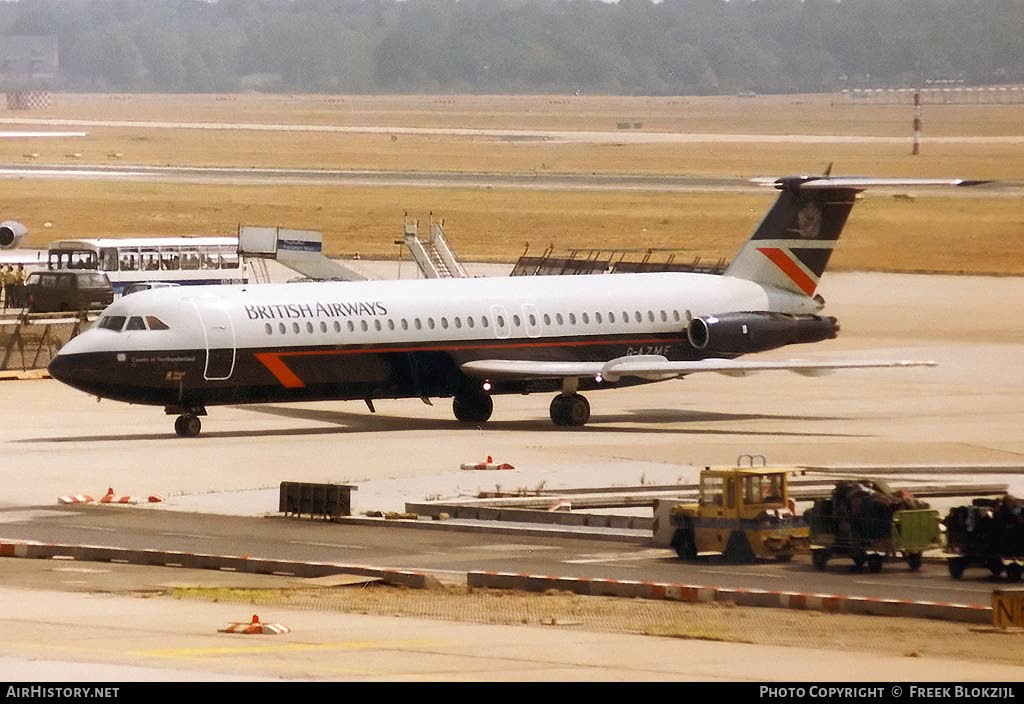Flying by the seat of his pants

Errors in aircraft maintenance and inspection processes can cause aircraft-systems failures in flight, resulting sometimes in catastrophic consequences with loss of life.
Other maintenance errors can also cause serious in-flight accidents.
Such was the case of a British Airways (BA) BAC 1-11 flight, which suffered an explosive decompression on June 10, 1990 while operating from Birmingham in England to Malaga in Spain.
While the aircraft was flying over Didcot, England, an improperly installed cockpit windscreen panel separated from its frame, and the captain was partially thrown out of the aircraft.
Crew members held him in place through the window frame for 20 minutes until the first officer landed the aircraft at Southampton Airport.
The captain was 42-year-old Timothy Lancaster, who had logged 11,050 flight hours, including 1,075 hours on the BAC 1-11. The co-pilot was 39-year-old Alastair Atchison, who had logged 7,500 flight hours, with 1,100 of them on the BAC 1-11.
The aircraft also carried four cabin crew members and 81 passengers. Co-pilot Atchison did a routine take-off at 7.20 hours. and then handed control to Capt Lancaster.
During the climb, both pilots released their shoulder harnesses and Lancaster loosened his lap belt.
At approximately 7.33 hours, the aircraft had climbed through 17,300 feet and was over Didcot, a railway town in South Oxfordshire.
At that time, the cabin crew began to prepare for a meal service. Flight attendant Nigel Ogden was entering the cockpit when there was a loud bang and the cabin quickly filled with condensation.
The left windscreen panel, on Lancaster’s side of the flight deck, had separated from the forward fuselage. Lancaster was propelled out of his seat by the rushing air from the decompression, and forced head first out of the flight deck. His knees were caught on the flight controls and his upper torso remained outside the aircraft, exposed to extreme wind and cold.
The autopilot disengaged, which made the plane descend rapidly. The flight-deck door was blown inward, lying across the radio and navigation console. Flight documents were blown out of the cockpit, and debris blew in from the passenger cabin.

Ogden rushed to grab Lancaster’s belt, while the other flight attendants secured loose objects and told passengers to adopt brace positions, in anticipation of an emergency landing.
The aircraft was not equipped with oxygen for everyone on board, so Atchison began a rapid emergency descent to reach an altitude with sufficient oxygen in the air for the aircraft’s occupants to breathe normally.
He then re-engaged the autopilot and broadcast a distress call, but was unable to hear the response from air traffic control owing to wind noise. The difficulty in establishing two-way communication led to a delay in starting emergency procedures.
Flight attendant Ogden, who was still holding on to Lancaster, was now becoming exhausted and his arms losing strength due to frostbite. Chief steward John Heward and flight attendant Simon Rogers took over the task of holding on to the captain.
By this time, Lancaster had shifted six-eight inches farther outside the cockpit and his head was repeatedly striking the side of the fuselage.
The crew believed he was dead, but Atchison told the others to continue holding onto him, out of fear that letting go of him might cause him to fall out of the aircraft completely and strike the left wing, engine or horizontal stabiliser, potentially damaging it.
Eventually, Atchison was able to hear the clearance from ATC to make an emergency landing at Southampton Airport.
The flight attendants managed to free Lancaster’s ankles from the flight controls while still keeping hold of him.
At 8.55 local time, the aircraft landed at Southampton and the passengers disembarked, using boarding steps.
Lancaster survived with frostbite, bruising, shock, and fractures to his right arm, left thumb and right wrist. Ogden had frostbite in his face and a dislocated shoulder. There were no other injuries.
The UK Air Accidents Investigation Branch (AAIB), which investigates all civil aircraft accidents and serious incidents in the United Kingdom, investigated the accident.
The blown-off windscreen panel was located near Cholsey, a village in South Oxfordshire.
AAIB Investigators determined that when the windscreen was installed, 27 hours before the flight, 84 of the bolts used were 0.026 inches smaller in diameter. The remaining six were of the correct diameter, but 0.1 inches too short. The shift maintenance manager selected the new bolts using the previous bolts on a like-for-like basis without reference to the maintenance manuals, as the plane was due to depart shortly.
The undersized bolts were unable to withstand the force of the pressure difference between the higher cabin pressure and the lower outside pressure. The windscreen was not a plug type, but fitted from the outside, so that cabin pressure would tend to dislodge it.
AAIB investigators also determined that the shift maintenance manager, who wore prescription reading glasses, was not wearing them at the time he was making the replacement bolt selection. This would have contributed to the incorrect bolt selection.
The AAIB determined that the shift maintenance manager’s potential to achieve quality in the windscreen process was eroded by his inadequate care, poor trade practices, failure to adhere to company standards and use of unsuitable equipment, which were symptomatic of his longer-term failure to observe the promulgated procedures.
The AAIB also faulted BA policies, which should have required testing or verification by another individual for this critical task.
The AAIB made several safety recommendations, foremost of which was an examination by the UK Civil Aviation Authority of the applicability of self-certification to aircraft engineering safety critical tasks, after which components or systems are cleared for service without functional checks. The AAIB also recommended that staff with prescription glasses should wear them when doing maintenance tasks.
Lancaster returned to work after less than five months. He left BA in 2003 and flew with EasyJet until he retired in 2008.
Atchison left BA shortly after the accident and joined Channel Express. He made his last commercial flight on a Boeing 737-33A from Alicante to Manchester on June 28, 2015, his 65th birthday.
Ogden returned to work, but subsequently suffered from PTSD and retired in 2001 on the grounds of ill-health.

Comments
"Flying by the seat of his pants"